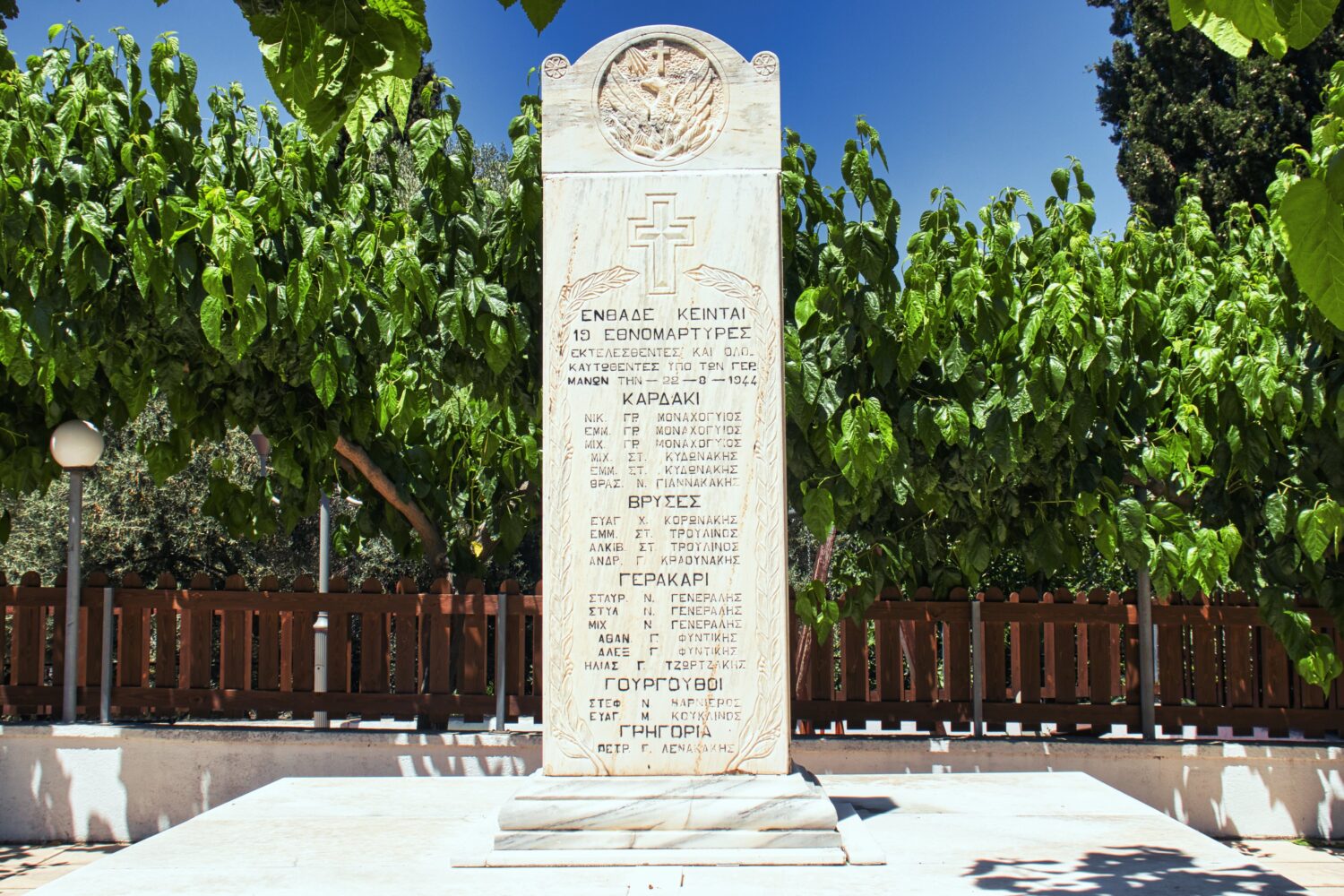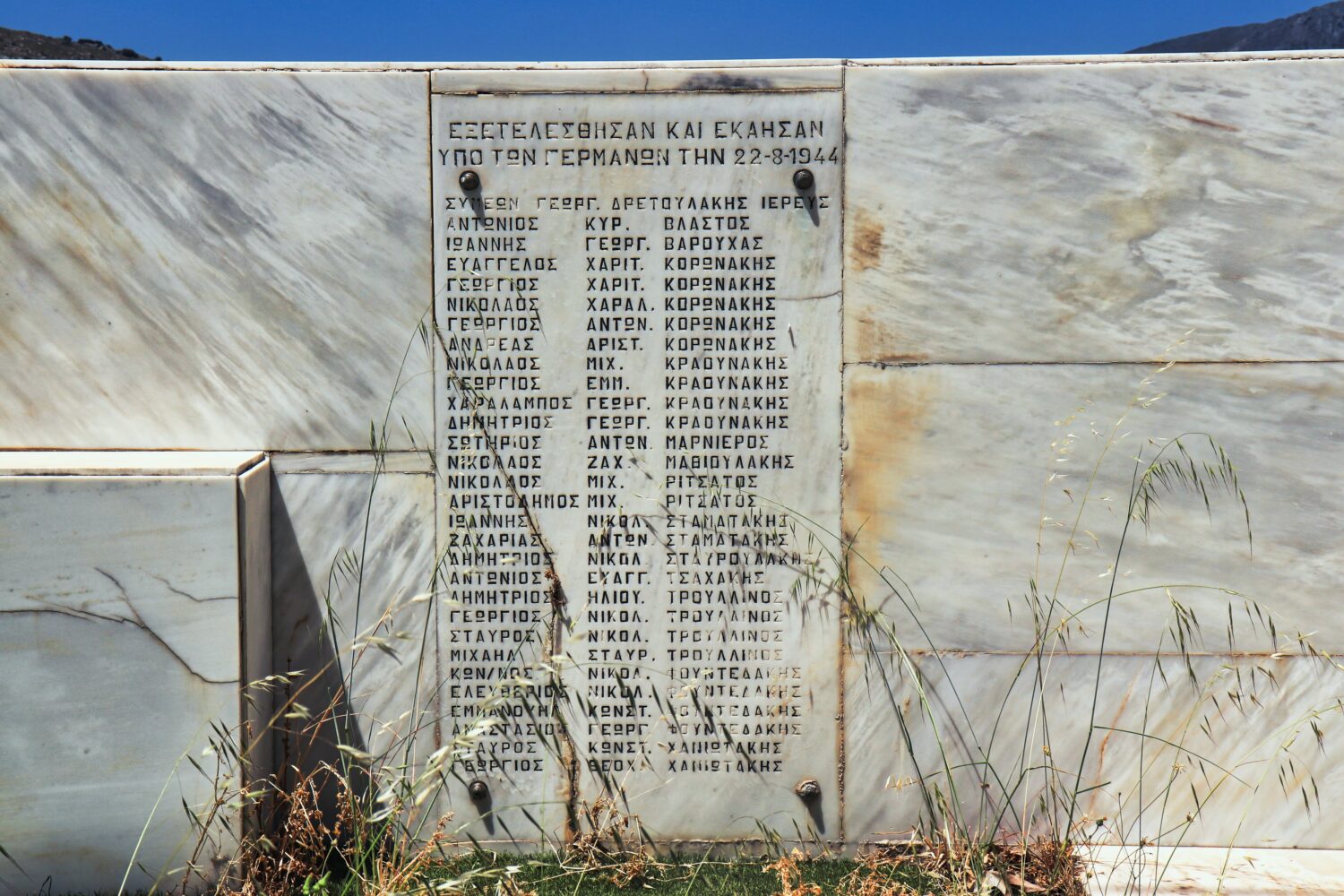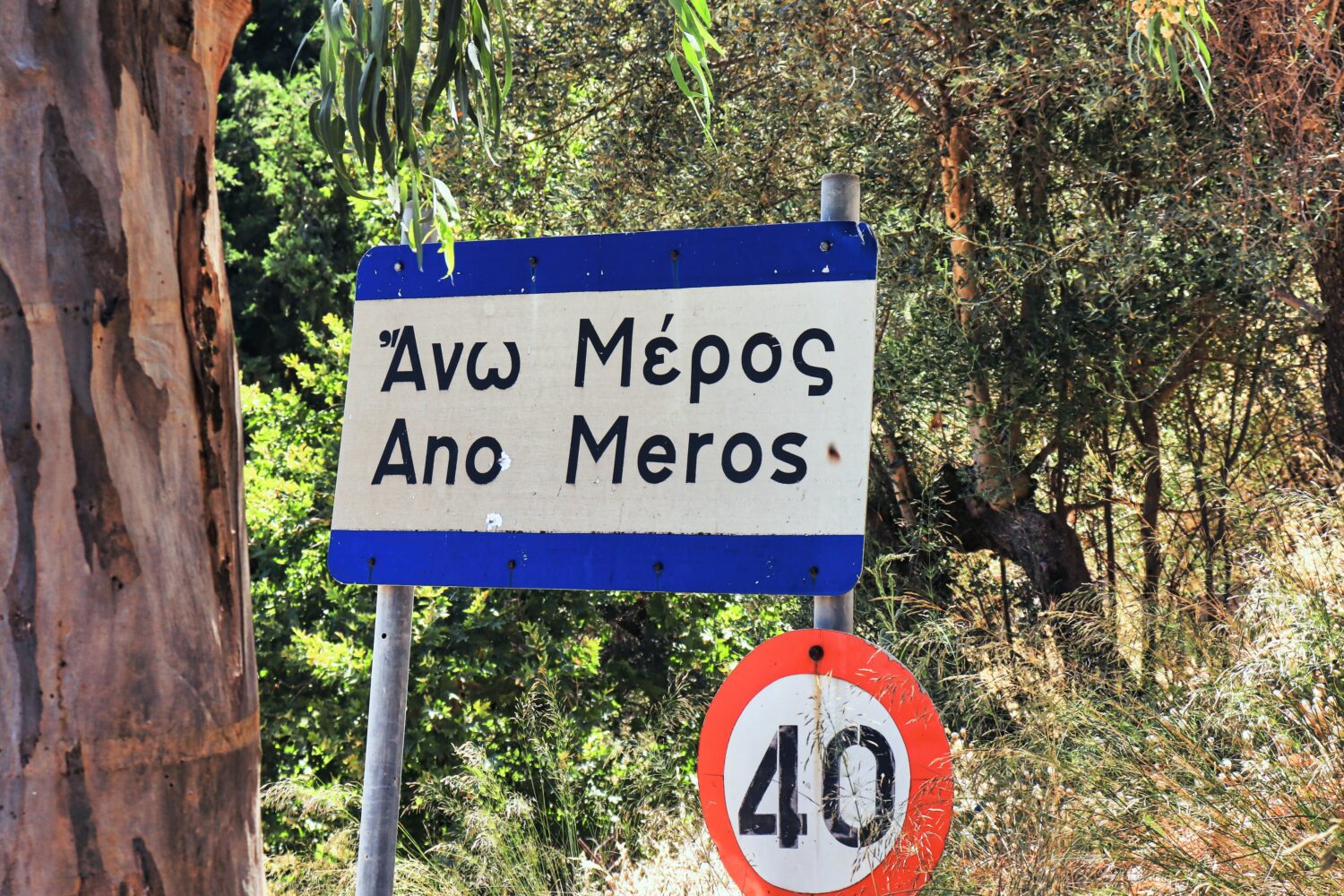The Story of the Kedros Villages: Resilience in the Heart of Crete
With its rich history and stunning landscapes, Crete has always symbolised resilience. One of the most poignant stories of this resilience is found in the Kedros villages. Nestled high on the western side of the Amari Valley, these villages bore the brunt of wartime atrocities during World War II, particularly the infamous destruction by German forces. Yet, against all odds, they have survived and flourished in modern times. This blog post delves into the harrowing yet inspiring tale of the Kedros villages, exploring their past, the horrors they faced, and their remarkable journey to recovery and renewal.
Personal Context
When I first came to Crete in the 1960s, I managed to arrive in the Amari Valley as perhaps their first tourist. If you read my first book, ‘Secret Crete Searching for My Home’, you will see the fine fuss they made of me. The first question was: where are you from? I told them I was English, from England. Then the ‘festivities’ began. I was treated as though I was a celebrity through all the villages of the valley. Everywhere I went in the Amari, I was welcome. I learned the stories from the families I met. The stories of the killings, the murders, the atrocities. Then I knew why I was welcome, -I was English.

Historical Context
Ancient Roots and Cultural Significance
The Kedros region in the Rethymno prefecture of Crete is steeped in history. The villages, including Gerakari, Ano Meros, and several others, have roots that trace back to antiquity. Known for their strategic locations, these villages were culturally and economically significant. They played crucial roles during the Minoan civilization and were vital throughout the Byzantine and Venetian periods. The residents of Kedros villages have always been known for their strong sense of community, resilience, and cultural pride.
The Lead-Up to WWII
As Europe plunged into the turmoil of World War II, Crete’s strategic importance became apparent to both the Axis and Allied forces. The island’s location made it a pivotal point in the Mediterranean, leading to the Battle of Crete in May 1941. Despite fierce resistance from Cretan civilians and Allied troops, German paratroopers eventually seized control of the island. However, the occupation of Crete was met with continuous resistance from the local population, often from regions like Kedros.

The German Destruction of Kedros Villages
The Context of the Attack
Although the Kedros villages supported and assisted the resistance efforts, they were not central hubs of guerrilla warfare against the Germans. The attacks on these villages occurred after the invasion of Normandy (D-Day) when the Germans were beginning to withdraw from Crete. The exact reasons for targeting these small villages remain unclear, but the brutality of the retaliation was unmistakable.

Retaliation and Destruction
In response to the broader resistance movement on Crete, the German forces initiated a brutal campaign of reprisals against the Kedros villages. The most infamous of these occurred on August 22, 1944. German troops, under the orders of General Friedrich-Wilhelm Müller, also known as the “Butcher of Crete,” embarked on a systematic destruction of nine villages in the Kedros region. The campaign was marked by its brutality and the scale of devastation.

The Attack
On that fateful day, German forces descended upon the villages along the Kedros mountain with overwhelming force. The operation was meticulously planned to serve as a warning to other resistant areas of Crete. Villagers were rounded up, homes were looted and set ablaze, and livestock was slaughtered. Many villagers, including women and children, were executed on the spot. The systematic destruction left the once-thriving communities in ruins. Among the destroyed villages were Ano Meros, Gerakari, Kardaki, Drigies, Smiles, Vryses, and others.

Aftermath
The immediate aftermath of the German attack was devastating. The physical destruction was nearly total, with homes, schools, and churches reduced to rubble. The survivors faced a harsh reality: their villages were uninhabitable, and their loved ones were gone. The psychological scars ran deep, with entire generations traumatized by the horrors they witnessed.

Survival and Resilience
Rebuilding Efforts
Despite the overwhelming destruction, the indomitable spirit of the Kedros villagers shone through. Immediately after the war, efforts to rebuild the villages began. With aid from the Greek government and international organizations, the survivors undertook the arduous task of reconstructing their homes and communities. The process was slow and challenging, but the villagers’ determination never wavered.
Preservation of Memory
A crucial aspect of the rebuilding process was the preservation of memory. The Kedros villagers understood the importance of remembering their past. Monuments and memorials were erected to honour those who perished during the German destruction. Annual commemorative events were established, ensuring that future generations would never forget the sacrifices and atrocities of their ancestors.

Modern Kedros Villages
Cultural Revival
In the decades following the war, the Kedros villages rebuilt their physical structures and revived their cultural heritage. Traditional music, dance, and festivals became integral to community life, celebrating the region’s unique identity. The preservation and promotion of Cretan customs and traditions played a significant role in reviving the villages.

Economic Challenges
Despite their cultural revival, the Kedros villages continue to struggle economically. Tourism, while present, remains relatively low compared to other parts of Crete. The remoteness of the villages and the shadow of their tragic history have kept them from becoming major tourist destinations. Consequently, many residents still need help to make a living, relying heavily on agriculture and occasional tourism.
Differences Among the Villages
Each of the Kedros villages has its unique character and history. For instance, Gerakari is known for its strong cultural traditions and has become a renowned cherry-growing district in Crete. On the other hand, Ano Meros is famed for its agricultural produce, mainly olives and grapes. Smaller villages like Smiles and Drigies, which were heavily affected during the war, have a quieter, more subdued atmosphere, reflecting their tragic past. Despite these differences, all the Kedros villages share a common resilience bond and a deep connection to their heritage.

Economic Development
Agriculture remains a staple of the local economy, particularly olive and grape cultivation. Additionally, the region has embraced sustainable tourism, attracting visitors interested in its rich history, natural beauty, and cultural experiences. Local businesses, including artisan crafts and hospitality services, have flourished, providing economic stability and growth, though still limited compared to more tourist-heavy regions of Crete.
Education and Innovation
Investments in education and infrastructure have further propelled the Kedros villages into modernity. Schools and educational programs have been established, focusing on traditional knowledge and modern skills. The younger generation is encouraged to pursue higher education and return to contribute to their communities. Technological advancements have also been embraced, ensuring the villages remain connected to the broader world.
The Legacy of Kedros Villages
Lessons in Resilience
The story of the Kedros villages is a powerful testament to human resilience. It illustrates how communities can endure unimaginable hardships and still find the strength to rebuild and thrive. The villagers’ unwavering commitment to their heritage and future inspires other Cretans and people worldwide.
A Beacon of Hope
Today, the Kedros villages stand as a beacon of hope and a reminder of the enduring spirit of Crete. They have transformed from wartime destruction symbols to vibrant, still struggling communities. The lessons learned from their journey are invaluable, offering insights into the power of community, memory, and resilience in the face of adversity.

Conclusion
The tale of the Kedros villages is one of sorrow and triumph, a narrative that encapsulates the essence of Crete itself. From the ashes of war and destruction, these villages have risen, embodying the strength and perseverance of their people. Their story is a reminder that even in the darkest times, the human spirit can endure and rebuild, creating a legacy of resilience that will inspire generations to come.
As we reflect on the history of the Kedros villages, we are reminded of the importance of remembering the past while looking forward to the future. These communities’ survival and flourishing are a testament to their resilience and a beacon of hope for all who face adversity. In the heart of Crete, the Kedros villages continue to thrive, a living monument to the indomitable spirit of humanity.
Table of Contents
Views: 44







